Artists
Halil Altindere


Halil Altindere, Ballerinas and Police, 2017, video projection, exhibition view Dance First Think Later, 2020, Le Commun, Geneva. Photo Emmanuelle Bayart. Courtesy the artist and Arta Sperto. 

Halil Altindere, Ballerinas and Police, 2017, video projection, exhibition view Dance First Think Later, 2020, Le Commun, Geneva. Photo Emmanuelle Bayart. Courtesy the artist and Arta Sperto. 

Halil Altindere, Ballerinas and Police, 2017. 9min39, HD video, sound. Courtesy of the artist and Pilot Gallery, Istanbul.
Halil Altindere’s work (TU, 1971, based in Istanbul) explores and interrogates political, social and cultural codes. For this video piece, Altindere collaborated with ballerinas and opera singers to create a searing and provocative critique of Turkey’s political and social crisis. The “protesting ballerinas”, standing as a metaphor for a new and different subculture, reveal new rituals of resistance, with dance serving as their weapon in response to police violence. At the same time, the artist highlights the personality cults of political leaders by placing their portraits in and around his characters’ environment.
Selected exhibitions: MoMa PS1, New York; Centre Pompidou, Paris; MAXXI, Rome; MAK, Vienna; CA2M, Les Abattoirs, Toulouse; Moderna Museet, Stockholm; Maat, ACC, Gwangju; Secession, Vienna; Mambo, Akademie der Künste, CCBB, Rio, Andrew Kreps Gallery, n.b.k. Berlin and Tensta Konsthall. The artist has participated in Documenta and at Manifesta, Venice, São Paulo, Berlin, Istanbul, Sharjah and Gwangju Biennials.
Alexandra Bachzetsis
&
Julia Born

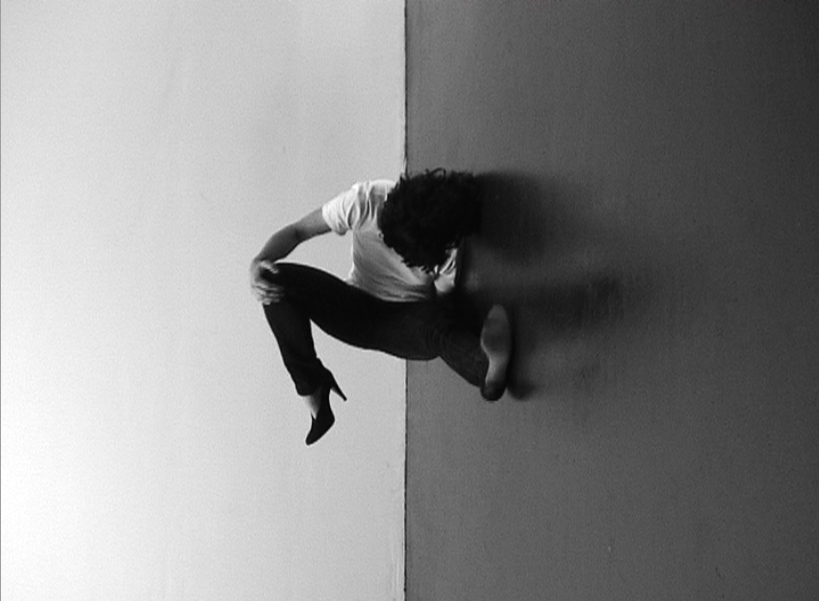
Alexandra Bachzetsis & Julia Born, This Side Up, 2007, videostill. 

Alexandra Bachzetsis & Julia Born, This Side Up, 2007, installation, exhibition view Dance First Think Later, 2020, Le Commun, Geneva. Photo Annik Wetter. Courtesy the artists and Arta Sperto. 

Alexandra Bachzetsis’ work (CH/GR, 1974; CH, 1975, based in Zurich) puts the body on stage and at stake, using it as an artistic and critical tool, a site of transformation and experiment, and a mode of communication. The video installation This Side Up explores the spatiality of how movement is taught, recorded and notated. Movement notation has often used symbols borrowed from music notation – “Labanotation”, developed in 1928 by choreographer and former architect Rudolph von Laban, was the first method of notation devised with performers, rather than the audience, in mind. The shapes of the symbols indicate not only the body part and the extent and timing of the movement, but also nine different directions in space. The video piece is accompanied by a poster by graphic designer Julia Born, a regular collaborator with Bachetzsis.
Alexandra Bachzetsis has created more than 25 choreographic pieces, which have featured at numerous international festivals and venues. Her work has also appeared in exhibitions at Kunsthalle, Bâle; Stedelijk Museum, Amsterdam; Tate Modern, London; Jumex Museum, Mexico City; and Centre culturel suisse, Paris. She has participated in the Berlin Biennale and at Documenta 13 and 14 in Kassel and Athens. A laureate of the Zurich Art Prize, she teaches at HEAD in Geneva. Her latest work, Chasing a Ghost, is touring in 2020.
Pauline Boudry
&
Renate Lorenz


Pauline Boudry / Renate Lorenz, Salomania, 2009, video, exhibition view Dance First Think Later, 2020, Le Commun, Geneva. Photo Annik Wetter. Courtesy the artists and Arta Sperto. 

Pauline Boudry / Renate Lorenz, Salomania, 2009, still, installation with HD film, 17 min. Performance: Yvonne Rainer, Wu Tsang, courtesy of Marcelle Alix, Paris, Ellen de Bruijne Projects, Amsterdam. 

Pauline Boudry / Renate Lorenz, Salomania, 2009, still, installation with HD film, 17 min. Performance: Yvonne Rainer, Wu Tsang, courtesy of Marcelle Alix, Paris, Ellen de Bruijne Projects, Amsterdam.
Salomania restages the “dance of the seven veils” from Alla Nazimova’s 1923 silent film, Salomé, itself centred on the figure of Salomé – an icon of independence and sexual freedom. Salomania also features performances and rehearsals of extracts from Valda’s Solo, created by choreographer and director Yvonne Rainer after watching Nazimova’s film. Here, Rainer is seen imparting her choreographic expertise to the performer Wu Tsang.
Pauline Boudry and Renate Lorenz, (CH, 1972 / DE, 1963, both based in Berlin), have been working together since 2007. In 2019 they represented Switzerland at the 58th Venice Biennale. Selected exhibitions include: Julia Stoschek Collection, Berlin (2019); Centre culturel suisse, Paris; High Line Art, New York (2018); Participant, New York; Contemporary Art Museum, Houston (2017); Van Abbemuseum, Eindhoven ; Asakusa, Tokyo (2016); Nottingham Contemporary; Kunsthalle, Vienna; Kunsthalle, Zurich; Frac Franche-Comté, Besançon (2015); CAPC, Bordeaux; Fort Worth Contemporary Arts; Badischer Kunstverein, Karlsruhe; Les Complices, Zurich (2012).
Alex Cecchetti


Alex Cecchetti, Dervish Skirts “Please wear them and dance”, exhibition view Dance First Think Later, 2020, Le Commun, Geneva. Photo Annik Wetter. Courtesy the artist and Arta Sperto. 

Alex Cecchetti, Dervish Skirts “Please wear them and dance”, in Dance First Think Later, 2020, Le Commun, Geneva. Photo Emmanuelle Bayart. Courtesy the artist and Arta Sperto.
Featured works
Dervish Skirts, 2020, « Please wear them and dance », printed on cotton, silk, organic satin, diameter 230 cm each
Dervish Skirts, 2020, painting on linen, diameter 230 cm
Alex Cecchetti (IT, 1977, based in Paris) is an artist, poet and choreographer whose practice can be described in terms of an art of evasion: tactile and poetic, aesthetic and material, spanning objects and situations. His new project, Jupes de Dervish, is a work in progress in which Cecchetti applies visual motifs and slogans to skirt fabrics. On display will be unique skirts with designs painted on the fabric, and others where the motif is printed. The skirts will be exhibited in such a way that visitors will be able to wear them and dance in the space. The spinning movement and the undulating effect it creates allows the skirts to be appreciated to their full potential.
In 2020, Cecchetti presented Occupie Paradit in collaboration with Laure Prouvost, at Netwerk, Aalst, Belgium. Solo exhibitions: Frac PACA, Marseille; Spike Island, Bristol; Void, Derry (2018); La Ferme du Buisson, Noisiel; Centre For Contemporary Art Ujazdowski Castle, Warsaw; Sandretto Re Rebaudengo, Turin (2017). Performances: Fog Festival, Triennale, Milan; Serpentine Galleries, London; Philharmonie de Paris (2019); Nuit Blanche, Paris; CNAP, Paris (2018); Thalie Lab, Brussels; National Archeological Museum, Naples; CRT Theatre, La Triennale, Milan; Palais de Tokyo, Paris (2017) Fondation Serralves, Porto (2016); Palais de Tokyo, Paris; FRAC Lorraine, Metz (2014).
Clément Cogitore


Clément Cogitore, Les Indes Galantes, 2017, video still, exhibition view Dance First Think Later, 2020, Le Commun, Geneva. Photo Annik Wetter. Courtesy the artist and Arta Sperto. 
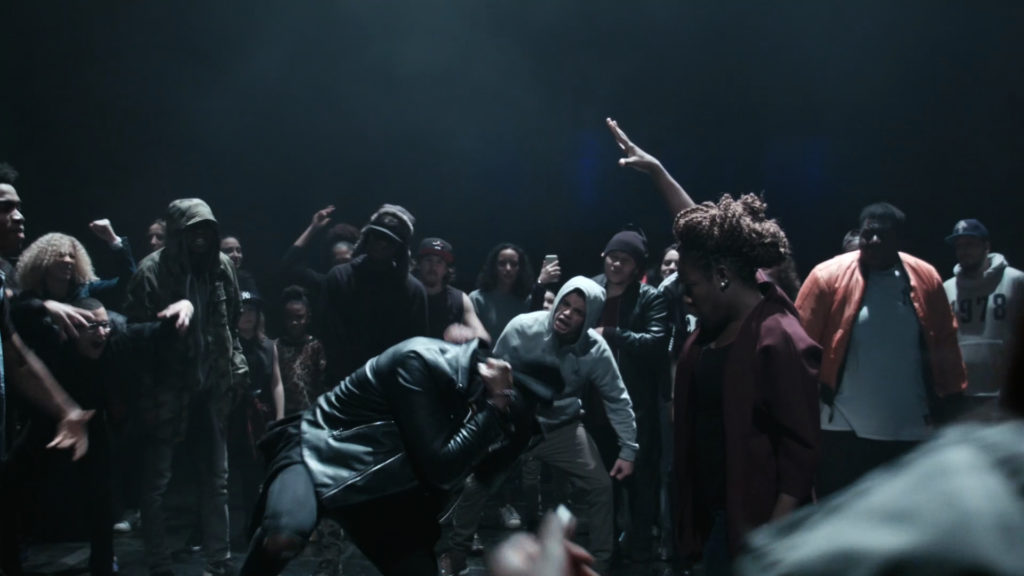
Clément Cogitore, Les Indes Galantes, 2017, videostill, colour, 6 min. Production Opéra national de Paris – 3° scène. Les Films Pélléas. Courtesy the artist, Galerie Eva Hober (FR), Galerie Reinhard Hauff (DE) 
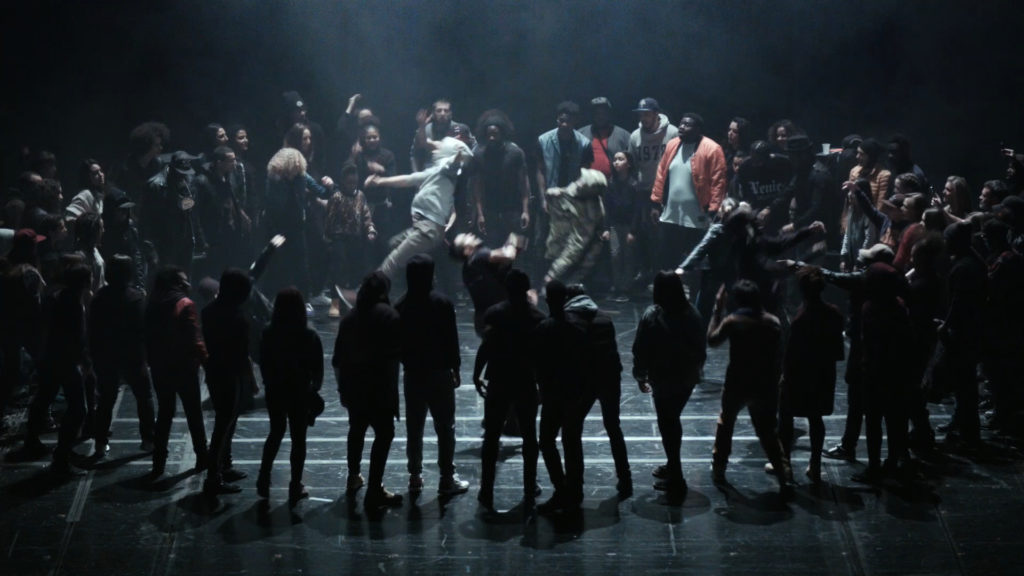
Clément Cogitore, Les Indes Galantes, 2017, videostill, colour, 6 min. Production Opéra national de Paris – 3° scène. Les Films Pélléas. Courtesy the artist, Galerie Eva Hober (FR), Galerie Reinhard Hauff (DE)
Les Indes Galantes, an opera-ballet written by Jean Philippe Rameau in 1735, was inspired by a Native American dance from Louisiana as performed by the chief of the Metchigaema in Paris in 1723. For this piece, Clément Cogitoire (FR, 1983, based in Paris) reworks a section of the ballet with a group of krump dancers – an art form born in predominantly black neighbourhoods of Los Angeles in the 1990s. Against a backdrop of police violence and riots following the murder of Rodney King, young dancers used krumping as a means to express the physical, political and social tensions they experienced. Placed together, the tribal dance of 1723 and today’s krump dancers disrupt histories of people and culture to tell a new story about young people dancing on a volcano.
Cogitore is a laureate of Paris’ Salon de Montrouge in 2011, the Prix Fondation Ricard in 2016 and the Prix Marcel Duchamp in 2018. His films have been screened at numerous festivals including Cannes, Locarno, Telluride, Los Angeles and San Sebastian. In 2017 a solo exhibition was held at le Bal, Paris. He directed a production of Les Indes Galantes in 2019 at the Opéra Bastille, Paris.
Dara Friedman

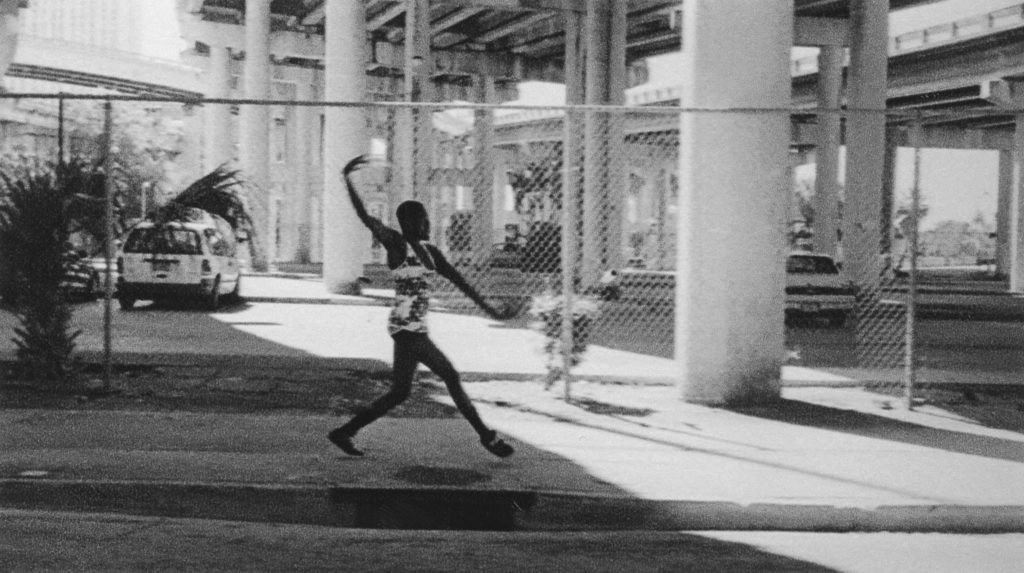
Dara Friedman, Dancer (still), 2011. Collection Pérez Art Museum Miami, partial gift of Robert and Diane Moss. Image courtesy of the artist and Gavin Brown’s enterprise, New York.
Film programme
Dancer
2011, 25’
11.09.2020
7 pm
Cinéma Spoutnik, l’Usine
Place des Volontaires 4
1204 Genève
With Dancer, Dara Friedman (DE, 1968, based in Miami and Bad Kreuznach) explores her interest in performance, urban space and structuralist film. Shot in black and white, the film captures sixty artists dancing over the course of forty scenes, alone or in couples, by day and night, down the pavements of Miami, in its parks and car parks, on rooftops and beaches. Flamenco, ballet, modern, break, pole, belly dancing, music theatre and ballroom dancing follow one after the other – even skateboarding and vogueing. Interrupting the normal flow of their urban environment, the dancers provide a poetic metaphor for the liberatory potential of self-expression, while highlighting the social restrictions that structure everyday life – particularly in public space. Inspired by choreographer Pina Bausch, Friedman developed a minutely detailed filming process, adapting each scene to the dancers’ bodies, thereby reducing the gap between reality and moving image and drawing the viewer intensely into the action.
Dara Friedman has had exhibitions at Kunstverein Arburger Bahnhof, Hamburg; MSU Broad Art Museum, East Lansing (2019); Aspen Museum of Art, Aspen; PAMM Perez Art Museum, Miami (2017); Hammer Museum, Los Angeles; Museum of Contemporary Art, Detroit (2014); Hirshhorn Museum and Sculpture Garden, Washington, D.C; Aargauer Kunsthaus, Aarau (2013).
Gerard & Kelly


Gerard & Kelly, Relay, 2018, exhibition view Dance First Think Later, 2020, Le Commun, Geneva. Photo Annik Wetter. Courtesy the artists and Arta Sperto. 

Gerard & Kelly, Clockwork, 2018, performance, L’appartement in MAMCO, in the framework of the exhibition Dance First Think Later and La Bâtie–Festival de Genève, 2020. Photo Emmanuelle Bayart. Courtesy the artists and Arta Sperto. 

Gerard & Kelly, Clockwork, 2018, performance, L’appartement in MAMCO, in the framework of the exhibition Dance First Think Later and La Bâtie–Festival de Genève, 2020. Photo Emmanuelle Bayart. Courtesy the artists and Arta Sperto.
Performances
Clockwork
performed by Tamara Bacci, Ruth Childs, Lenio Kaklea, Ryan Kelly (alternating)
28-30.08.2020
12pm, 1.30pm, 3.30pm, 5pm
4 performances each day, 40’
MAMCO
L’Appartement
10, rue des Vieux-Grenadiers
1205 Geneva
Rencontre avec les artistes
Sunday 30.08
2.30pm
MAMCO
L’Appartement
10, rue des Vieux-Grenadiers
1205 Genève
Film programme
Schindler/Glass
2017, 35’
11.09.2020
7pm
Cinéma Spoutnik, l’Usine
Place des Volontaires 4
1204 Geneva
Influenced by minimalist dance, institutional critique and queer theory, Brennan Gerard and Ryan Kelly’s practice (US, Brennan Gerard, 1978; Ryan Kelly, 1979, based in Paris) sits at the boundary of dance and contemporary art, while incorporating writing, video and sculpture.
Clockwork is a performance for two dancers. Adapted for the reconstructed home of Ghislain Mollet-Viéville, a keen supporter of minimal and conceptual art, at MAMCO, Clockwork interlaces rhythms of movement and fragments of spoken memories. The choreography is articulated around a cluster of gestures corresponding to the positions of figures on a clockface.
Relay, a live installation in two of the window bays at le Commun, will be accompanied by drawings and scores revealing the links between the artists’ research in architecture, choreography and time.
Gerard & Kelly have been working together since 2003. Currently in residence at the Cité internationale des arts in Paris, they have presented works – both objects and performances – at the Museum of Contemporary Art, Los Angeles (2020); the Festival d’Automne, Paris (2019), Getty Musem, Los Angeles (2019); Pioneer Works, Brooklyn (2018); Centre Pompidou, Paris (2017); New Museum, New York (2014-2015); Guggenheim Museum, New York (2015); Hammer Museum, Los Angeles (2014); The Kitchen, New York (2014).
Marie-Caroline Hominal


Marie-Caroline Hominal, Maquettes, 2018-2020; Instantanés, 2020, video, in Dance First Think Later, 2020, Le Commun, Geneva. Photo Annik Wetter. Courtesy the artist and Arta Sperto. 

Marie-Caroline Hominal, Maquettes (detail), 2018-2020, in Dance First Think Later, 2020, Le Commun, Geneva. Photo Annik Wetter. Courtesy the artist and Arta Sperto. 

Marie-Caroline Hominal, Fragment, performance, in the framework of the exhibition Dance First Think Later, 2020, Le Commun, Geneva. Photo Emmanuelle Bayart. Courtesy the artist and Arta Sperto.
Featured work
Maquettes en tout genre et pirouettes
2019-2020
Models and slapstick performance videos
Film programme
Le Triomphe de la renommée
Film with performance
11.09.2020
7pm
Cinéma Spoutnik, l’Usine
Place des Volontaires 4
1204 Geneva
Beyond her practice as a choreographer, dancer and performer, Marie-Caroline Hominal (CH/FR, based in Geneva) also develops more exploratory and little-known practices. She creates models of imaginary and future set designs using rough materials. She makes short videos featuring herself, where burlesque, humour and absurdism rub shoulders, often posting them on Instagram. For this exhibition, selected models and videos will be presented as Maquettes en tout genre et pirouettes, representing the first appearance of the artist’s output in an exhibition of this kind and magnitude.
In 2019 Marie-Caroline Hominal presented her work at Swiss Dance Days, Arsenic, Lausanne; Centro Recoleta, Buenos Aires; La Bâtie, Geneva; Kaserne, Bâle; MIAM, Sète; Théâtre de Vidy, Lausanne; One Gallery, Chicago; and MCAM, Montréal. She was awarded the prize of “Danseuse exceptionnelle” at the Prix suisse de la danse in 2019.
Lenio Kaklea


Lenio Kaklea, A Hand’s Turn, performance, Studio de l’ADC, Maison des arts du Grütli, Genève, in the framework of the exhibition Dance First Think Later, 2020. Photo Emmanuelle Bayart. Courtesy the artist and Arta Sperto. 
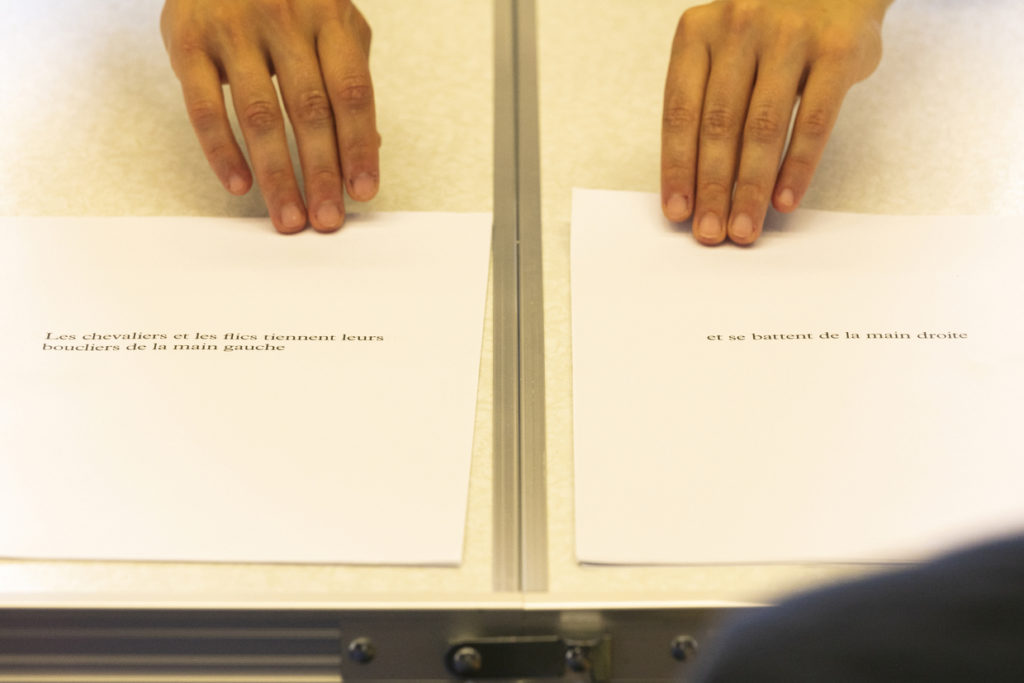
Lenio Kaklea, A Hand’s Turn, performance, Studio de l’ADC, Maison des arts du Grütli, Genève, in the framework of the exhibition Dance First Think Later, 2020. Photo Emmanuelle Bayart. Courtesy the artist and Arta Sperto. 

Lenio Kaklea, A Hand’s Turn, performance with Jacquelyn Elder, Studio de l’ADC, Maison des arts du Grütli, Genève, in the framework of the exhibition Dance First Think Later, 2020. Photo Emmanuelle Bayart. Courtesy the artist and Arta Sperto.
Performance
A Hand’s Turn
Solo for two spectators
Alternating performances by Lenio Kaklea and Jacquelyn Elder
22-25.08.2020
12pm-3.30pm and 4.30pm-8pm
25′, every 30’
Maison des arts du Grütli
Studio de l’ADC,
2nd floor
16, rue Général Dufour
1204 Geneva
A Hand’s Turn is what we could call a private session for two spectators at a time; it is a gesture, in a subtle choreographic sense, involving a book and a performer. In the first part of this solo piece―a solo though referring to a plurality of presences―, the performer unfolds the practices of reading, as she turns the sheets of paper from right to left, in a steady and continuous flow, proposing a duration, a trajectory, a story. The repetition of the linear movements of the hands identifies with the repetitive back and forth motions of the eyes as they scan the content and surface of the pages. This ocular itinerary, the decryption of the signs, the time and temporality created by the hand movements, the spacing of the pages deconstruct and re-assign the function of the gaze. In the second part of the encounter, the performer dances with her back to the audience; with the use of a small hand mirror she guides the visitors’ gaze in the act of seeing. After the session, one can purchase the book, tracing back their own experience, looking at their own practices of seeing ―and partly themselves in the show.
Lenio Kaklea (GR, 1985, based in Paris) trained as a dancer in Athens and Angers, also undertaking the “master d’expérimentation en arts et politique (SPEAP)” directed by Bruno Latour at Sciences Po, Paris. As a performer, she has worked with Alexandra Bachzetsis, Gerard & Kelly, François Chaignaud & Cecilia Bengolea, Emmanuelle Huynh and Boris Charmatz among others. She has been making choreographic work since 2009, presenting at Centre Pompidou, Lafayette Anticipations, Ménagerie de Verre, Paris, ImpulsTanz, Vienne, Athens & Epidaurus Festival, Quartz, Brest, Latitudes Contemporaines, Lille, Laboratoires d’Aubervilliers, far – festival des arts vivants, Nyon, and exhibited at the Centre d’art La Passerelle, Brest. In 2019, she received the Dance Prize of the Hermès Foundation and the Triennal of Milan. A Hand’s Turn was acquired by KADIST foundation in 2020.
La Ribot

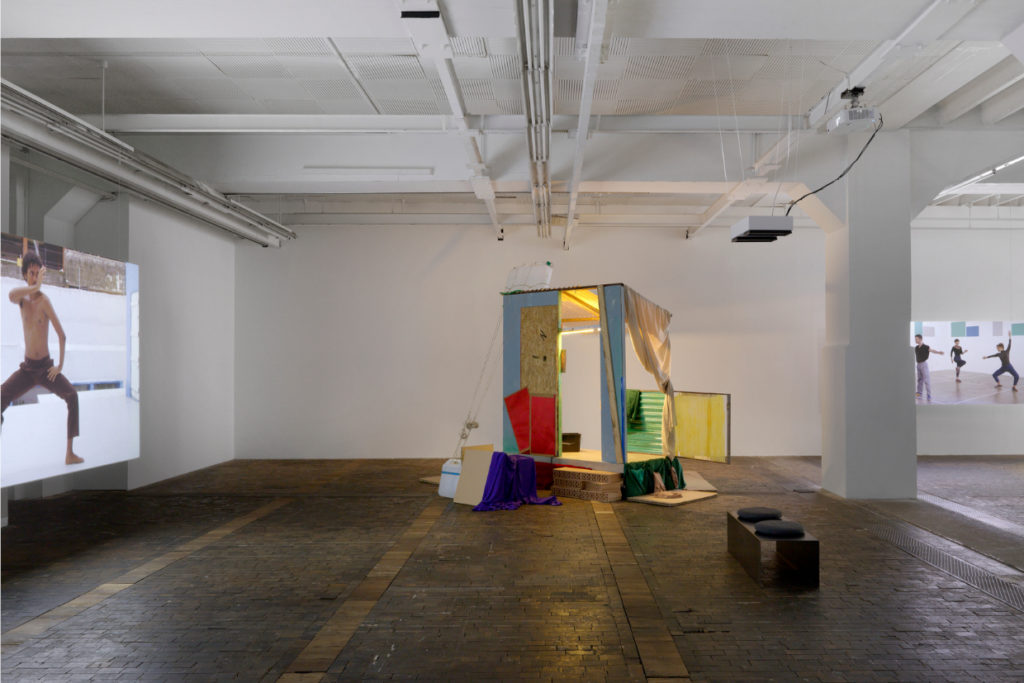
La Ribot, Pièce distinguée no.54, exhibition view Dance First Think Later, 2020, Le Commun, Geneva. Photo Annik Wetter. Courtesy the artist and Arta Sperto. 

La Ribot, Pièce distinguée no.54, installation-performance-dance, in Dance First Think Later, 2020, Le Commun, Geneva. Photo Emmanuelle Bayart. Courtesy the artist and Arta Sperto. 

La Ribot, Pièce distinguée no.54, installation-performance-dance, in Dance First Think Later, 2020, Le Commun, Geneva. Photo Emmanuelle Bayart. Courtesy the artist and Arta Sperto.
Performances
Pièce distinguée no. 54
2020
Premiere
Installation – performance – dance
Performed by Piera Bellato, Mathilde Invernon and Thami Manekehla
Music by Fernando de Miguel
11-13.09 et 11-13.09.2020
17h
Film programme
Mariachi 17
2009, 25’
11.09.2020
7pm
Cinéma Spoutnik, l’Usine
Place des Volontaires 4
1204 Geneva
La Ribot (ES/CH, 1962, based in Geneva) presents a new project drawn from part of the set design for PARAdistinguidas (2011), presented as a sculpture, Huan Lan Hong, in 2016. This “shack”, an image associated with hidden, nocturnal activities, will evolve as a kind of clandestine workshop during the exhibition, through the actions of two performers and a sound artist. This new experimental sculpture-performance marks the first phase in a series of projects planned over three years.
La Ribot was the subject of a “portrait” at the Festival d’automne, Paris, in 2019, with 6 pieeces: Panoramix at Centre Pompidou; Se vende at Centre Pompidou and the CND; Laughing Hole at the CND ; Please, please, please (with Mathilde Monnier and Tiago Rodriguez) at Espace 1789, Saint-Ouen and at Centre Pompidou; Happy Island at the CND; Another distinguée at Centquatre. In 2019, her work was also presented at the Mercat de les Flors, Barcelona; Macba, Barcelona; MUSAC, Leon; in 2018, CCE, Mexico City in 2017, Tripostal, Lille; Tanz im August, Berlin ; in 2016, Centro Parraga, Murcia; in 2015, Centre culturel suisse, Paris; Beirut Art Center; Musée de la danse, Rennes.
With the support of the Ernst Göhner Stiftung the Fonds Mécénat SIG.
La Ribot-Genève is supported by the City of Geneva, the Canton and Republic of Geneva and Pro Helvetia.
Pierre Leguillon


Pierre Leguillon, La grande évasion (teaser), 2012/2020, in Dance First Think Later, 2020, Le Commun, Geneva. Photo Annik Wetter. Courtesy the artist and Arta Sperto. 

Pierre Leguillon, La grande évasion (teaser), 2012/2020, in Dance First Think Later, 2020, Le Commun, Geneva. Photo Annik Wetter. Courtesy the artist and Arta Sperto.
Working on a commission from the Musée de la danse, Pierre Leguillon (F, 1969, based in Brussels) went in search of photographs to build a network of associations linked with the idea of dance. Images of dancing, or that dance in their own right? Dealing with movement at the margins – details, echos, gestures, allusions – above all, they are signs in circulation, linked by historical, thematic or simply subjective connections. To bring these unrelated images, gathered from the internet to the public, Leguillon hatched a kind of escape plan in several phases: from classifying, to displaying in public, to uploading onto FlickR, and finally to their material presence in the exhibition space, in the style of a mobile mini-museum of dance. Taking these scattered photographs as a starting point, each of us can imagine their own story, recreating their own choreography in the manner of a flip-book.
Pierre Leguillon is a French artist, curator and author. He teaches at HEAD in Geneva, and is the creator of unique books including Oracles. Artists’ Calling Cards (Pierre Leguillon and Barbara Fédier ed., 2017), and the forthcoming The Museum of Mistakes, both published by Editions Patrick Frey.
Xavier Le Roy


Xavier Le Roy, Self Unfinished en 105 captures d’écran, 2020, digital prints, in Dance First Think Later, 2020, Le Commun, Genève. Photo Annik Wetter. Courtesy the artist and Arta Sperto. 

Xavier Le Roy, Self Unfinished en 105 captures d’écran, 2020, digital prints, in Dance First Think Later, 2020, Le Commun, Genève. Photo Annik Wetter. Courtesy the artist and Arta Sperto.
Featured work
Self Unfinished in 105 screenshots
2020, 105 small-format photographs, screenshots taken every thirty seconds, from a video of the choreographic work Self Unfinished, 1998
Xavier Roy’s practice interrogates the relationship between performers and audiences, aiming to transform or reconfigure dichotomies of object and subject, animal and human, machine and human, nature and culture, public and private, formal and informal. Part of Le Roy’s research takes the form of works created specifically for gallery settings: production (2010-2911) developed with Marten Spangberg as part of the exhibition MOVE: Choreographing You; Rétrospective, produced for the Fondation Antoni Tapiès in Barcelona (2012); Untitled (2012) for the exhibition 12 Rooms, Titre Provisoire, 2015 created in Sydney for the John Kaldor Public Art Project, and For The Unfaithful Replica in collaboration with Scarlet Yu at CA2M in Madrid, 2016.
Following studies in molecular biology, Le Roy has been working as an artist since 1991. Solo pieces, beginning in 1994, include Self Unfinished (1998), Produit de Circonstances (1999), Giszelle (2001) in collaboration with Eszter Salamon, Le Sacre du Printemps (2007), Produit d’autres circonstances (2009) and Sans titre (2014). He participated in Skulptur Projekte Münster in 2017, in Venice Dance Biennale and at the Museo Jumex in Mexico City in 2018, and was the subject of a “portrait” at the Festival d’automne in Paris in the same year. In 2019 he was featured at Hamburger Bahnhof and at the Haus der Kulturen der Welt in Berlin.
Klara Lidén


Klara Lidén, The Myth of Progress, 2008, video, in Dance First Think Later, 2020, Le Commun, Geneva. Photo Annik Wetter. Courtesy the artist and Arta Sperto. 

Klara Lidén, The Myth of Progress (Moonwalk), 2008, video still. Courtesy of the artist and Reena Spaulings Fine Art, NY LA
In this video piece, the artist is filmed in profile walking through empty Manhattan streets by night. Her movements slowed down to an extreme, she slides through the urban landscape at a different rhythm to the world that surrounds her. A melancholic piano tune accompanies the moving images like a funeral march – a lethargic and apocalyptic vision. The shots are filmed at different distances: at some points Lidén is seen from the other side of the road with cars speeding by in the opposite direction, at other points we see a train pass by quickly in the background. The low-resolution footage and handheld camera movements allude to the viral videos of YouTubers who, out of nowhere, become stars for 15 ‘Warholian’ minutes. The work can be read as an elegy to productivity and to the performed self, as mastered by Michael Jackson, who made the Moonwalk famous worldwide in his routine for “Billie Jean” in 1983. In executing dance movements at a slowed down rhythm, Lidén lays her technique bare, deliberately failing to create the kind of illusion and spectacle Jackson achieved.
Klara Lidén’s solo exhibitions (SW, 1979, based in Berlin and New York) have been at, among other places, Secession, Vienna (2019), Reena Spaulings Fine Arts, New York (2028), Kunstverein, Braunschweig (2016), Wiels, Brussels; Le Consortium, Dijon (2015), Museion, Bolzano; Irish Museum of Modern Art, Dublin (2013); New Museum, New York (2012); Moderna Museet, Stockholm (2011); Biennial participations have included Tallin Baltic (2018), Istanbul (2017) and Venice (2011).
Melanie Manchot


Melanie Manchot, Dancing is the best revenge, 2020, video still Commissioned by Centre d’art Pasquart, Biel. Courtesy Galerie m, Germany and Parafin, London, UK. © Melanie Manchot 
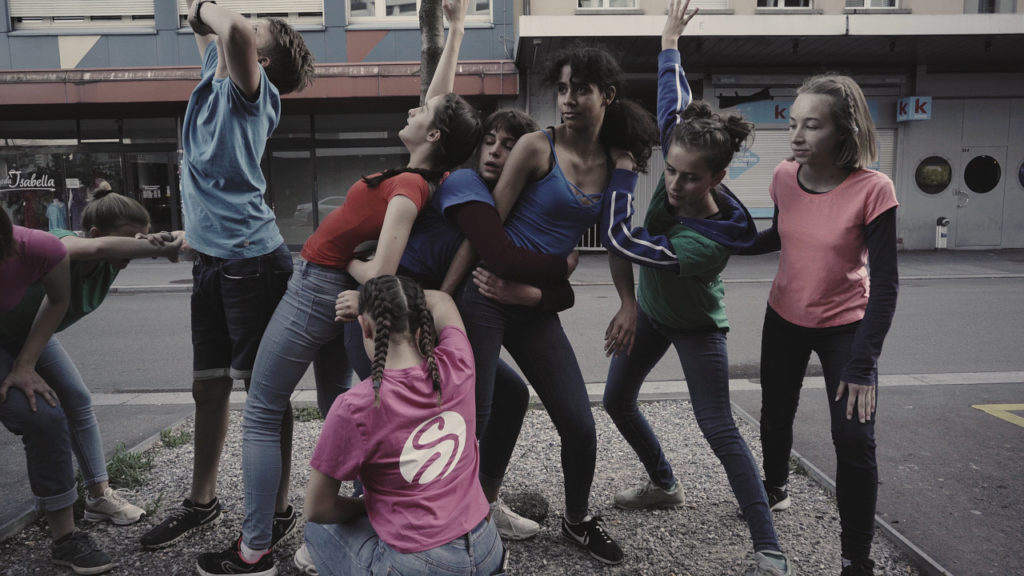
Melanie Manchot, Dancing is the best revenge, 2020, video still Commissioned by Centre d’art Pasquart, Biel. Courtesy Galerie m, Germany and Parafin, London, UK. © Melanie Manchot 

Melanie Manchot, Dancing is the best revenge, 2020, video, exhibition view Dance First Think Later, 2020, Le Commun, Geneva. Photo Annik Wetter. Courtesy the artist and Arta Sperto.
Dancing is the best revengeis the third part in a trilogy of events and video pieces by Melanie Manchot (DE/GB, 1966, based in London). In each case, the starting point has been a live, participatory event in public space, each in a different city: Paris in 2011, London in 2017 and Bienne in 2019, marking the end of Manchot’s exhibition at Pasquart. Like both previous events, Dancing is the best revenge was created in collaboration with dance schools and organisations representing different forms of dance, drawing together a plethora of choreographic gestures, languages and cultures. In the final iteration, seven dance schools, with a total of more than 60 dancers, were brought together to create a series of processions through Bienne, converging on the central square of the old city, the ‘Ring’. The video uses two distinct kinds of filming: a drone positioned at 90 degrees above some of the dancers, and close-up shots of dancers in semi-frozen “tableaux”. These two approaches allude both to the film work of celebrated choreographer Busby Berkeley, and the tableau-style images used by flashmobs.
Selected exhibitions: Pasquart, Bienne; BTV Stadtforum Innsbruck (2019); MAC/VAL, Vitry/Paris; Parafin, London (2017); Art Night, London (2017); Towner Art Gallery, Eastbourne (2016).
Olivier Mosset
&
Jacob Kassay


Olivier Mosset & Jacob Kassay, Sans Titre, 2013, installation, exhibition view Dance First Think Later, 2020, Le Commun, Geneva. Photo Annik Wetter. Courtesy the artist and Arta Sperto.
Featured work
Untitled
2013, site-specific installation
Mirrors and ballet barre
280 x 1500 cm
Struck by the radical, highly efficient flexibility of ballet rehearsal studios, with their mirrors and dance barres, Olivier Mosset (CH, 1944, based in Tucson) decided to create a new installation reproducing this setup. Through discussions with Jacob Kassay (US, 1983, based in Los Angeles), who has his own interest in mirrors, the pair ended up co-authoring the work.
The installation will be produced materially in dimensions adapted to the space at Le Commun (280 x 1500cm) and will modify how the space is perceived from the first floor.
Olivier Mosset is primarily known as an abstract painter, often working in monochrome. He also creates collaborations with other artists, which were the subject of his exhibition Olivier Mosset collaborations at the Centre culturel suisse in Paris (2014). In 2019, he had a solo exhibition at the Haus Konstruktiv in Zurich, and in 2020, a retrospective was presented at MAMCO. Mosset created a stage curtain and set design for Sous Apparence, choreographed by Marie-Agnès Gillot at l’Opéra Garnier in Paris in 2012.
Samuel Pajand
+
Lovesong(s)

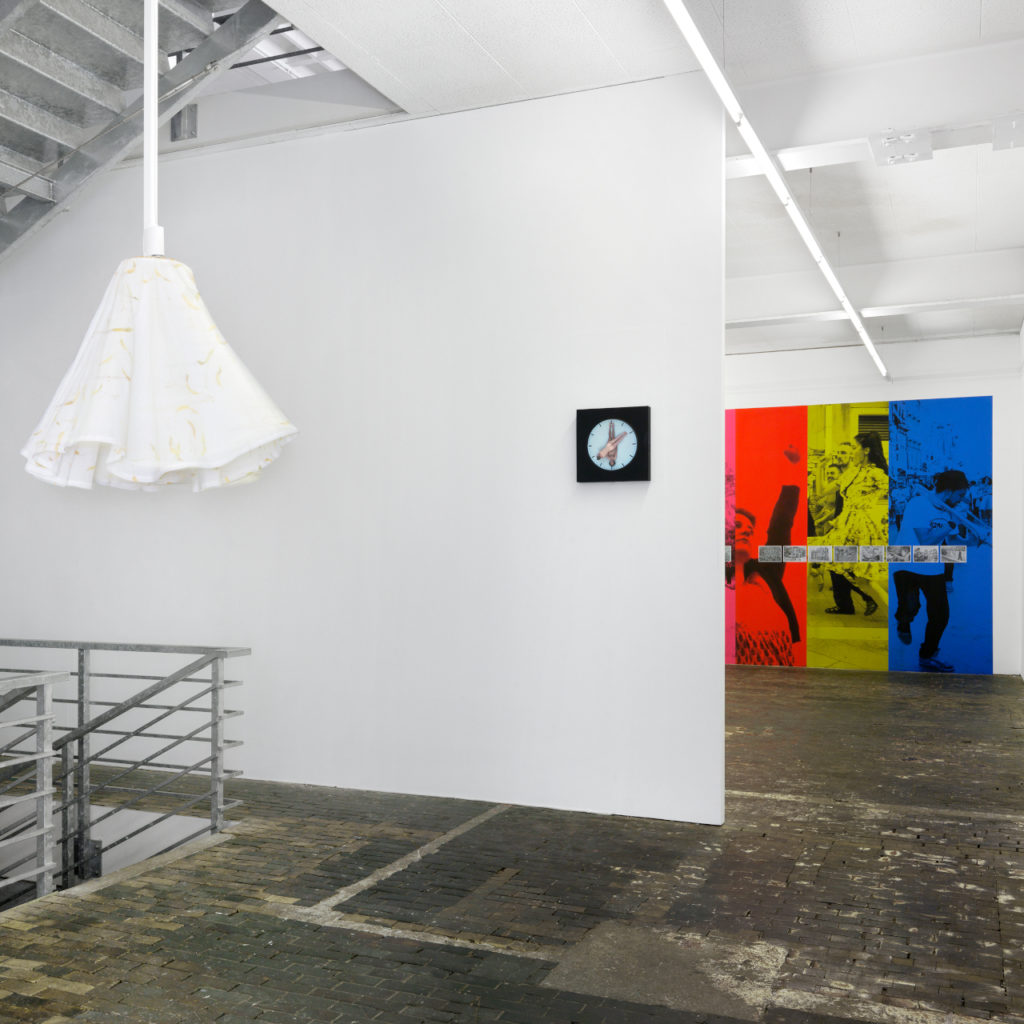
Samuel Pajand, L’horloge de l’amour, video object, exhibition view Dance First Think Later, 2020, Le Commun, Geneva. Photo Annik Wetter. Courtesy the artist and Arta Sperto. 

Samuel Pajand, L’horloge de l’amour, 2020, vidéo de 12h lue en boucle sur un écran de 30 cm de diamètre, incrusté dans une boîte en bois de 42 x 42 x 6 cm. 2 boutons rotatif affectés respectivement aux minute 

Lovesong(s), concert, in the framework of the exhibition Dance First Think Later, 2020, Le Commun, Geneva. Photo Emmanuelle Bayart. Courtesy the artist and Arta Sperto.
Featured work
L’horloge de l’amour
2020, 12 hour video loop on a 30 cm screen held within a wooden box, 42x42x6 cm
Performance
Lovesong(s)
(Samuel Pajand,
Heleen Treichler,
Stéphane Vecchione)
Concert
21.08.2020
8.30pm
“On the night of 11 December 2018, while my partner was lying on top of me and turning around on the axis of our sexual organs, the image of L’horloge de l’amour came to me. The image persisted to such a point that I felt it necessary to give it material form. On 20 June 2019, we carried out a 12-hour filmed performance behind closed doors, on a mattress of 2.32m in diameter, which served as the basis for L’horloge de l’amour.”
Following studies in audiovisual art, Samuel Pajand (CH/F, 1977, based in Geneva and Paris) has worked as a sonic artist, musician, composer and performer, with, among others, Marco Berrettini, the Gremaud/Gurtner/Bovay collective, Cindy Van Acker et Marie-Caroline Hominal. In 2017, he founded the organisation Trans with Victor Roy, and they created the installation Phare, presented at the Festival de la cité in Lausanne and at BIG in Geneva. Their next project, Champs, will be presented at La Bâtie in Geneva in September 2020. In 2019 he founded Lovesong(s), a rock group with Heleen Treichler on bass and Stéphane Vecchione on drums. This will be the group’s first participation in an exhibition.
Christodoulos Panayiotou


Christodoulos Panayiotou, Dying on Stage, lecture performance with Jean Capeille, ADC–Association pour la danse contemporaine, in the framework of the exhibition Dance First Think Later and La Bâtie–Festival de Genève, 2020. Photo Emmanuelle Bayart. Courtesy the artist and Arta Sperto. 
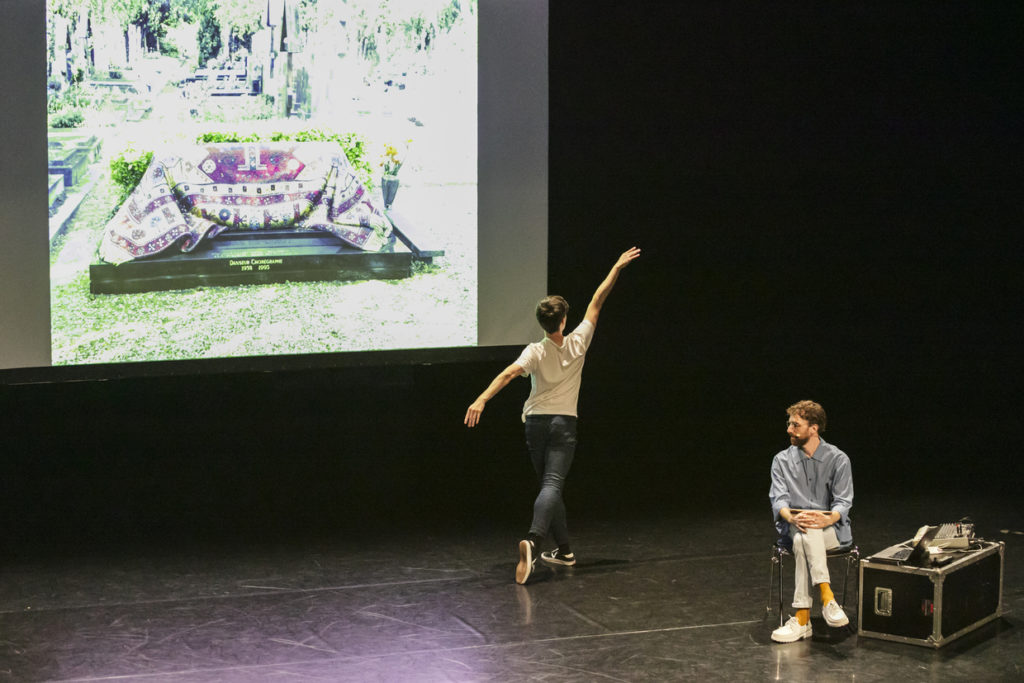
Christodoulos Panayiotou, Dying on Stage, lecture performance with Jean Capeille, ADC–Association pour la danse contemporaine, in the framework of the exhibition Dance First Think Later and La Bâtie–Festival de Genève, 2020. Photo Emmanuelle Bayart. Courtesy the artist and Arta Sperto. 

Christodoulos Panayiotou, Dying on Stage, lecture performance with Jean Capeille, ADC–Association pour la danse contemporaine, in the framework of the exhibition Dance First Think Later and La Bâtie–Festival de Genève, 2020. Photo Emmanuelle Bayart. Courtesy the artist and Arta Sperto.
Performance
Christodoulos Panayiotou
Dying on Stage
Performance-lecture
06.09.2020
8pm, duration: 2.5h
13.09.2020
1pm, duration: 6h
ADC
Association pour la danse contemporaine
82, rue des Eaux-Vives
1207 Geneva
In Dying on Stage, a lecture-performance consisting of YouTube clips, Cypriot artist Christodoulos Panayiotou (CY, 1978, basé à Limassol et Paris) reflects on the spectacle of death. From taboos and tragedies to accidents and idealisations, drawing equally on the metaphysics of tragedy and the triviality of game-shows, the piece presents the outlines of an impossible representation. Trained in dance, Panayiotou’s inspirations include the 1992 premiere of the ballet La Bayadère, staged by Rudolf Noureev shortly before his death. Dying on Stage assembles extracts from films, operas, concerts and variety shows. From Pasolini to Amy Winehouse via Dalida, this wide-ranging lecture articulates “phantom” images such as these in an extended monologue, punctuated with a segment of a dance performance by Jean Capeille. A love letter to the idea of the spectacle, the performance deconstructs aesthetic hierarchies and unites its audience members around their sole destiny.
Dying on stage has been presented at, among others, the Musée d’Orsay as part of the Festival d’automne, Paris, at Camden Arts Centre, London, 2019; at Kunstenfestivaldesarts, Brussels, 2018; at the Sharjah Biennial; and at Centre Pompidou in Paris, 2017. Christodoulos Panayiotou has exhibited at Camden Art Centre, London; La Tallera, Mexico, 2019; Galerie Kamel Mennour, Paris; Rodeo, London; Belvedere 21, Vienna; Dhaka Art Summit, Bangladesh; and Hammer Museum, Los Angeles, 2018.
Alexandra Pirici


Alexandra Pirici, Re-collection, 2018-2020, ongoing action, performed by Michelle Cheung and Jared Marks, Musée d’art et d’histoire Genève, in Dance First Think Later, 2020. Photo Emmanuelle Bayart. Courtesy the artist and Arta Sperto. 

Alexandra Pirici, Re-collection, 2018-2020, ongoing action, performed by Michelle Cheung and Jared Marks, Musée d’art et d’histoire Genève, in Dance First Think Later, 2020. Photo Emmanuelle Bayart. Courtesy the artist and Arta Sperto. 
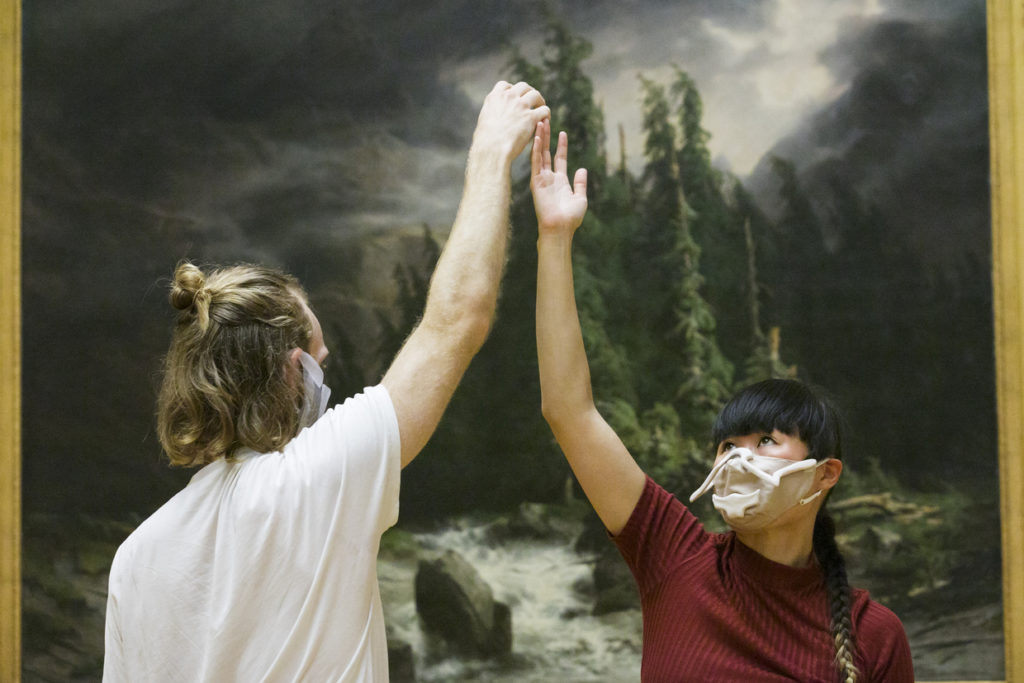
Alexandra Pirici, Re-collection, 2018-2020, ongoing action, performed by Michelle Cheung and Jared Marks, Musée d’art et d’histoire Genève, in Dance First Think Later, 2020. Photo Emmanuelle Bayart. Courtesy the artist and Arta Sperto.
Performance
Re-collection
Ongoing action, performed by Michelle Cheung and Jared Marks
26-30.08.2020
2pm-5pm
Non-stop every day
Musée d’art et d’histoire
(Section Beaux-arts)
2, rue Charles-Galland
1206 Geneva
Alexandra Pirici (RO, 1982, based in Bucharest) is an artist who uses choreography both for its economy of means and for its critical energy, as a means of questioning history, monuments and public memory. Re-collection is an ongoing, performative action, built around the notion of collecting, while subverting traditional understandings of the term. Real and fictional objects – works of art and forms of life – are transformed into embodied memories. Objects become movements, unlabelled, with no need for classification. The boundaries between these new objects – actions / gestures / moving sculptural forms – are porous and less defined such that we never quite know where each “object” begins and ends.
Alexandra Pirici, based in Bucharest, has a background in choreography and works within the visual arts, with sculpture, performance, music and text. Among her works are “Leaking Territories” for the Muenster Sculpture Projects, 2017, “An Immaterial Retrospective of the Venice Biennale”, (with Manuel Pelmus), for the Romanian Pavilion at the 55th Venice Biennale, projects in public and museum spaces for the Centre Pompidou in Paris, Art Basel Messeplatz, Tate Modern London, the 12th Exposition suisse de sculpture in Bienne, Van Abbemuseum in Eindhoven, New Museum – New York, Manifesta 10 in Saint Petersburg.
Julien Prévieux

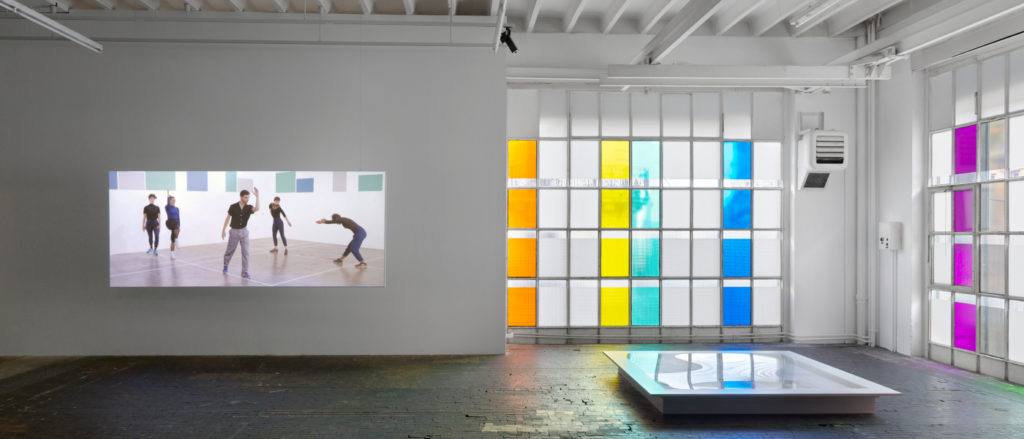
Julien Prévieux, What Shall We Do Next, Séquence #2, 2014, video, exhibition view Dance First Think Later, 2020, Le Commun, Geneva. Photo Annik Wetter. Courtesy the artist and Arta Sperto. (vernissage) 

Julien Prévieux, What Shall We Do Next, Séquence #2, 2014, video, in Dance First Think Later, 2020, Le Commun, Geneva. Photo Emmanuelle Bayart. Courtesy the artist and Arta Sperto. 

For the past ten years, Julien Prévieux (FR, 1974, based in Paris) has been researching patents, filed with an American agency and he has been composing “an archive of future gestures”. The movements enacted by the six performers in What Shall We Do Next ? (Séquence # 2) derive from this collection of phantom acts, sometimes stillborn, conceived before the machines which will decide their function have even been put together. Ticking over in a series of rhythmic sequences, they interweave the world of dance and its history. The script-based origin of these controlled gestures recalls the work of Rudolf Laban, inventor of a famous system of movement notation. Meanwhile their probable functional purposes bring to mind American postmodern dance, inspired by Anna Halprin’s ideas on the expression of everyday gesture.
Julien Prévieux was awarded the Prix Duchamp in 2014, followed by an exhibition at Centre Pompidou, Paris in 2015. In 2019, his exhibition Mordre la machine, was presented at MAC, Marseille. His project Lettres de non motiviation, published by Zone éditions, was adapted for theatre by the director Vincent Tomasser. Julien Prévieux has produced one further piece for theatre, On Balls, books and hats, presented at the Festival Actoral, Marseille (2018), at Etrange Cargo Ménagerie de verre, Paris, and at T2G, Gennevilliers (2019).
Marinella Senatore


Marinella Senatore, The School of Narrative Dance, Genève, 5 banners, in Dance First Think Later, 2020, Le Commun, Geneva. Photo Annik Wetter. Courtesy the artist and Arta Sperto. 

Marinella Senatore, drawings from the series It’s time to go back to street, 2019-2020; The School of Narrative Dance, 2016, wallpaper, in Dance First Think Later, 2020, Le Commun, Geneva. Photo Annik Wetter. Courtesy the artist and Arta Sperto. 
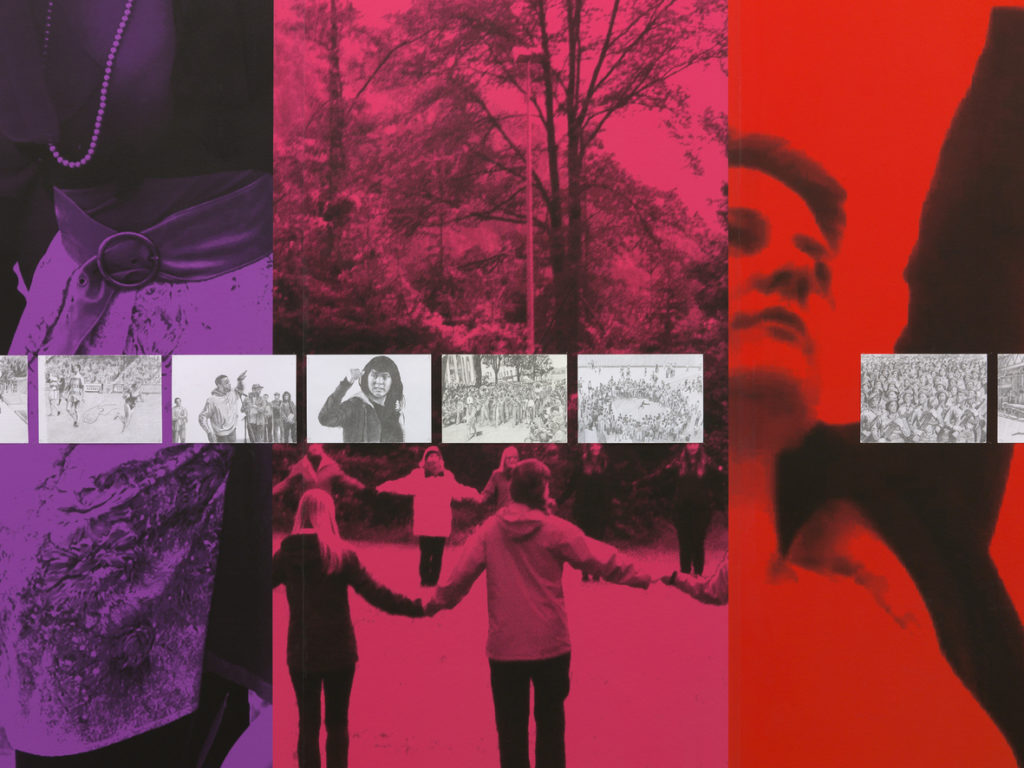
Marinella Senatore, drawings from the series It’s time to go back to street, 2019-2020; The School of Narrative Dance, 2016, wallpaper, in Dance First Think Later, 2020, Le Commun, Geneva. Photo Annik Wetter. Courtesy the artist and Arta Sperto.
Featured work
5 new banners, stitched fabric, roughly 100×70 cm each
More than 25 drawings from the series It’s time to go back to street
2020
Performance
Parade Genève
12.09.2020
CANCELLED
The Parade Genève by Marinella Senatore should have brought dozens of amateur dancers and musicians, activists, athletes and other performers in the streets of Geneva on Saturday September 12 from 3 p.m. After more than 8 months of preparation, while the difficulties and weaknesses had accumulated, we finally had to make the sad heavy decision to cancel this flagship project of Dance First Think Later, due to the situation related to COVID-19.
Founded in 2012, The School of Narrative Dance offers an alternative system of education based on emancipation, inclusion and self-teaching, initiating multidisciplinary international projects focused on narration and choreography. The project has already been developed in more than 25 cities: London, Miami, New York, Rome, Zurich, Manheim, Berlin, Oulu, Mantaa, Ebensee, Gotheborg, Malmö, Copenhague, Shenzhen, Rivoli, Cuienca, Bregenz, Paris, Kassel, Evora, Turin, Cold Spring, Cagliari, York, Utrecht, Palermo, Johannesburg, Venise, Milan, Modica, and soon in Amsterdam and Geneva.
Marinella Senatore’s art (IT, 1977, based in Rome) is that of a pure energy flowing from short-circuits between the different elements she gathers in a single (real or virtual) space. The artist’s role is to activate a mechanism for producing a transformative force from the convergence of the elements that enter it; a force then transmitted in the surrounding area until it reaches the audience.
In the exhibition there will be five banners specifically created for the occasion, recent collages, and a selection of twenty A4 drawings from the series It’s time to go back to street, representing a more militant side to the artist.
Parade Genève, taking place across the city centre, will involve a procession featuring dozens of dance groups and other amateur performers. The planned route runs between the Parc des Bastions and the Pavilion de la danse, via the old town. Among those who have expressed an interest in participating are brass bands, tap dancers, slameurs, yoga groups, opera singers, parkour, krump, twirling, wrestlers, runners, string quartets, rappers, dancers, disabled musicians, and more.
Selected recent exhibitions and parades: Manifesta 12, Palermo; Centre Pompidou, Paris; MAXXI Museum, Rome ; Queens Museum, New York; Kunsthaus Zurich ; Castello di Rivoli, Turin; Kunsthalle, St Gallen; Palais de Tokyo, Paris; Schirn Kunsthalle, Frankfurt; Museum of Contemporary Art, Chicago; Museum of Contemporary Art, Santa Barbara; High Line, New York; Museo Madre, Naples.
Gregory Stauffer

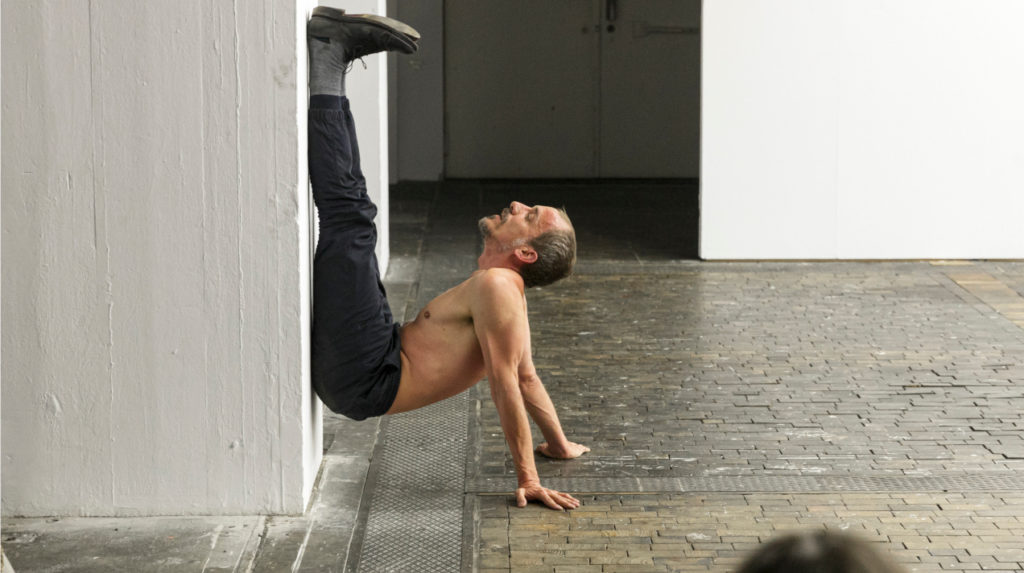
Gregory Stauffer, Sitting, performance, in Dance First Think Later, 2020, Le Commun, Geneva. Photo Emmanuelle Bayart. Courtesy the artist and Arta Sperto. 

Gregory Stauffer, Sitting, performance, in Dance First Think Later, 2020, Le Commun, Geneva. Photo Emmanuelle Bayart. Courtesy the artist and Arta Sperto. 

Gregory Stauffer, Verbemove, 2013, videostill, 32’56”. Courtesy the artist
In 1967, the artist Richard Serra wrote a list of verbs denoting ways of acting on a material object. Roll, fold, bend, shorten, plane, tear, carve, split, cut, slice… Given Serra’s proximity to Yvonne Rainer and SImone Forti, these words can be read in terms of his interest in dance. With Verbmemove, Gregory Stauffer (CH, 1980, based in Bienne and Genève) pays homage to Serra by “performing” each of the 108 verbs in the list.
Sitting explores the act of sitting on the ground, of cataloguing it through performance. The base, the weight, the position, the anchoring, and even the concentric circles that radiate from a sitting body. I reflect on the relationship with the earth and its resources. Raw choreography, the architecture of seating and its play of possibilities. How does our weight move, become dynamic, grow or shrink? What relation to the world, what myths and figures, are invoked and brought to us? Who is sitting on the ground?”
Gregory Stauffer is an associate artist and resident at Arsenic in 2018-2020. His work has been presented at Bone Festival, Bern; Centre culturel Suisse, Paris; Musée Tinguely, Bâle; ADC, Geneva; Südpol, Lucerne; Goethe Institute, Dacca; Contemporary Dance Festival, New Delhi; CACY, Yverdon.
Barbara Wagner
&
Benjamin de Burca

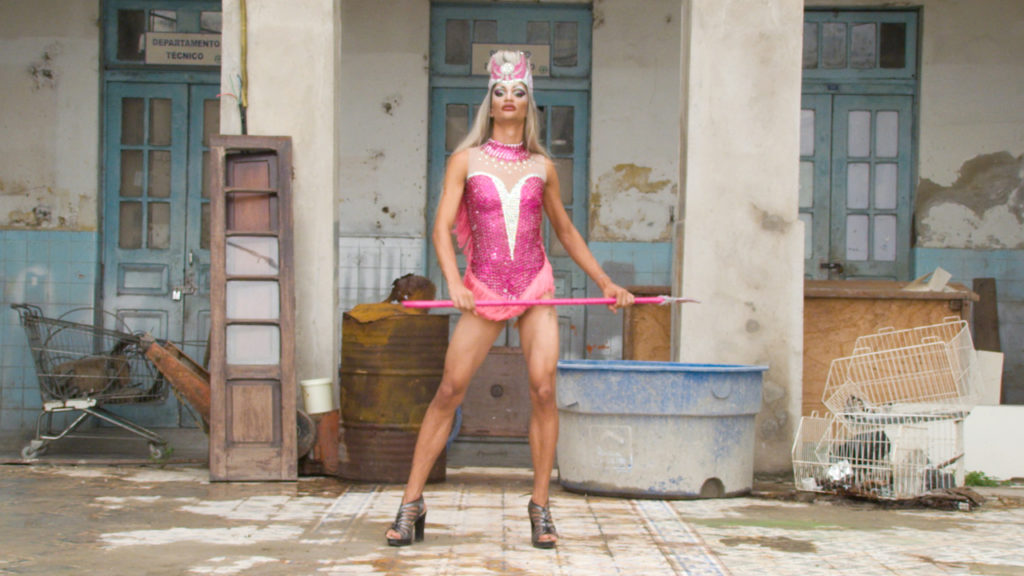
Bárbara Wagner & Benjamin de Burca, Faz Que Vai (Set To Go), 2016, video still, 2K, color, sound, 16/9, 12min 

Bárbara Wagner & Benjamin de Burca, Faz Que Vai (Set To Go), 2016, video still, 2K, color, sound, 16/9, 12min 

Bárbara Wagner & Benjamin de Burca, Faz Que Vai (Set To Go), 2016, video still, 2K, color, sound, 16/9, 12min
Film programme
Swinguerra
2019, 23’
11.09.2020
7pm
Cinéma Spoutnik, l’Usine
Place des Volontaires 4
1204 Geneva
Linked to the notion of resistance inherent in capoeira, in the early twentieth century frevo dancing was set to military fanfares at carnival time, before evolving into a quasi-acrobatic art celebrated as an authentic tradition. Recognised by UNESCO as a form of intangible cultural heritage in 2012, the dance passed from the street to the stage, and its circulation is strongly promoted by the local government as the foremost performing art for the economy of northeast Brazil. Faz que vai deconstructs frevo’s festive image, articulating how new subjectivities are shaping and interrogating both the genre and the socio-economic issues at stake in it. Faz que vai profiles four dancers in a series of commentaries on the relationships between movement, the body and the video camera, and reflects on how notions of the carnivalesque are used as diverse strategies for preserving frevo as image, heritage and product.
Barbara Wagner (BR, 1980, based in Recife) is a journalist and photographer whose work explores the media manipulation of public perception. Benjamin de Búrca (BR, 1975, based in Recife) , Irish and born in Germany, works with painting, photography and video. They have been collaborating since 2011, studying collective practices and traditional rituals. Wagner and de Burca have participated in the 33rd Panorama de Arte Brasileira (São Paulo), the 36th EVA International in Limerick, the 32nd São Paulo Biennial and the 5th Skulptur Projekte Münster. In 2019 they represented Brazil at the Brazilian Pavilion in the Venice Biennale.

